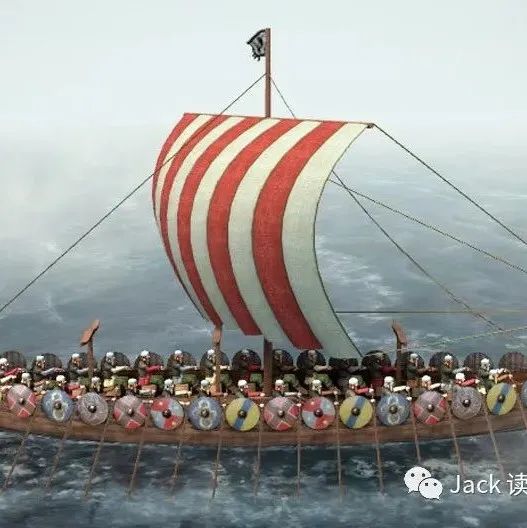Read History with Jack 41 - The Vikings Article 1 维京人1
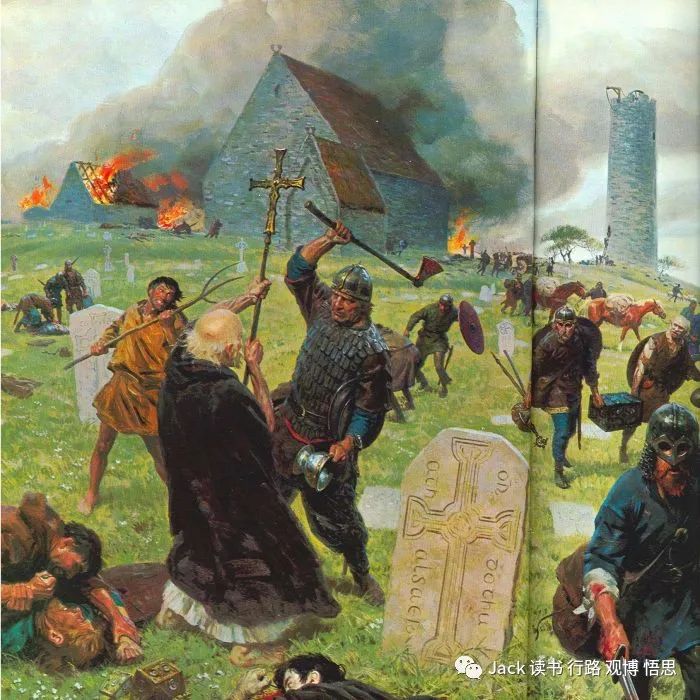
(The massacre at Lindisfarne, 793 C.E.)
In 793 C.E., the fall of the island of Lindisfarne off the Eastern coast of England marked the start of a new legendary and ultimately impactful age – the Viking Age. Most of us view the Vikings as wild barbarians, "leaping from dragon ships, axes hungry for gore." The Vikings did bring unprecedented levels of destruction to Europe and other surrounding regions. They broke apart Charlemagne's seemingly all-powerful old Holy Roman Empire with fierce blows; they conquered one kingdom after another in England in countless macabre ways; they invaded mainland Europe in large numbers during the 10th century, leaving a trail of blood hitherto unseen in European history. Undoubtedly, the Vikings' violence and bloodthirst caused catastrophe for the Europeans. But looking at history from an overarching perspective, were all destruction extremely detrimental to the light of civilization? I think not. I believe the Vikings contributed positively to the unification of multiple nations in Europe, brought deep-rooted changes to the European political systems, led to the birth of mercantilism or the outlook of global trade, and created cultural merging through their bloody conquests. These contributions did not fade away together with the Viking Age. Instead, most became the cornerstones for Europe and the Western world at large we see today.
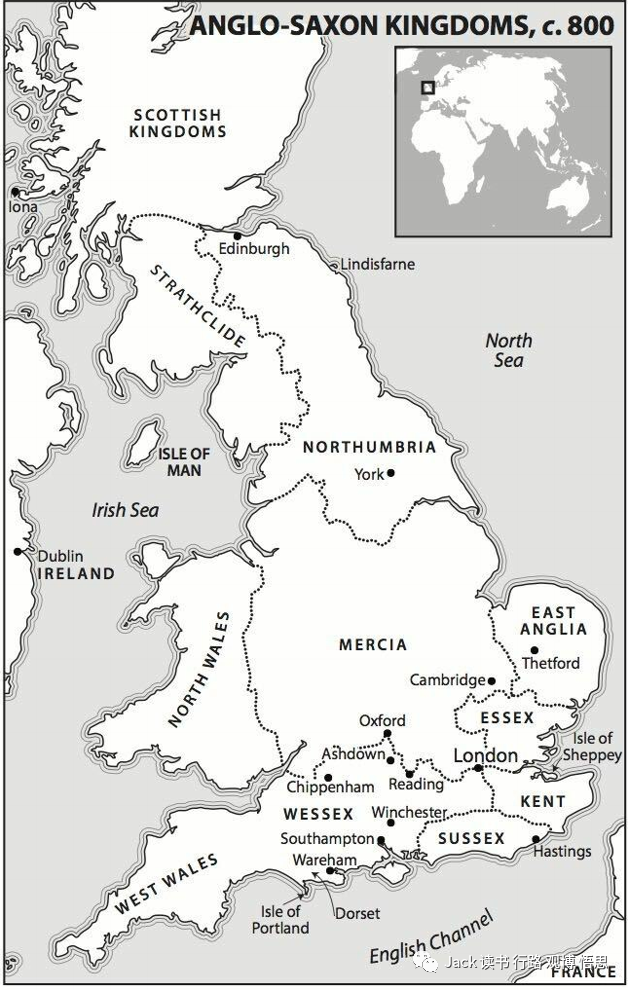
With their destruction, the Vikings laid the foundational blocks for the unification of England, Scotland, and other major European powers. To understand this process better, take the example of England. Before the Viking Age, England was politically divided and loosely organized. There were seven kingdoms. The four major ones were Mercia, Northumbria, East Anglia, and Wessex (see map). The three minor ones were Sussex at the channel coast, Essex at modern-day London, and Kent at Canterbury. These seven kingdoms did not form a unifying force and even had frequent wars with each other. In the 9th century, however, Viking forces, mainly led by the legendary Ivar the Boneless, started to target England massively. Ivar began to gather supplies for the attack during 865-866. Then, once he felt everything was ready, he launched the invasion. With ease, the Viking forces demolished one central kingdom after another, from Northumbria to Mercia, then East Anglia. Wessex was the only kingdom that barely survived the blow of Vikings after its king Alfred sued for peace and eventually negotiated successfully with the Viking leader Guthrum. England was devastated, but this devastation also paved a smoother road for unification. King Alfred was the only native king since the others were wiped out. This fact became the most solid foundation towards creating a unified English state under the crown of Wessex. Moreover, by strengthening his kingdom to fend off the Vikings, Alfred also revived literacy rates, boosted the economy, and fortified important political or economic centers, thus meeting the prerequisites for unification. From the example of England, one can see how the Vikings pushed forward the merging and union of European states with their destructive power.
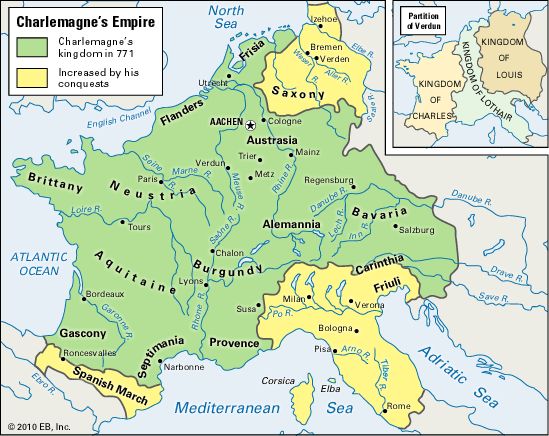
More incredibly, the Vikings brought profound changes to the old European political systems. Today, we often disregard the Vikings as barbaric people who could not possibly devise modern and functioning government systems. But, through their exploration and conquest, the Vikings brought reform in two ways: either by showing the incompetency and inefficiency of the old system or directly bringing in a new system to wherever they came. In the 9th century, Charlemagne's seemingly mighty old Holy Roman Empire gradually broke apart as it eventually failed to sustain the blows of the Vikings. There were fundamental flaws in the organization of the empire itself, such as its over-reliance on a strong leader to keep the parts in place (Louis the Pious, the successor Charlemagne, was not that of a firm king, so the empire gradually fell apart). As the empire crumbled under Viking attacks, smaller, more efficient states rose from the ashes. Of these, four would turn into the most significant European powers during the Middle Ages: France, England, the Holy Roman Empire, and the kingdom of Sicily. Without the Vikings, the old system would not have been replaced so quickly and thoroughly, and thus political development would have been discouraged during the time. The Vikings also innovated and adapted, introducing new political structures wherever they went. In Iceland, the Vikings established a republic based on individual rights. History rarely knew such kind of a relatively direct democracy before that period. When ecological conditions changed in Iceland, the residents participated in a democratic referendum or vote that decided to place their republic under Norwegian rule. The Vikings reformed the government by adding new elements in other places as well, such as in France or Russia. Their actions and experiments arguably made them the most significant political experimenters and government creators during their age.
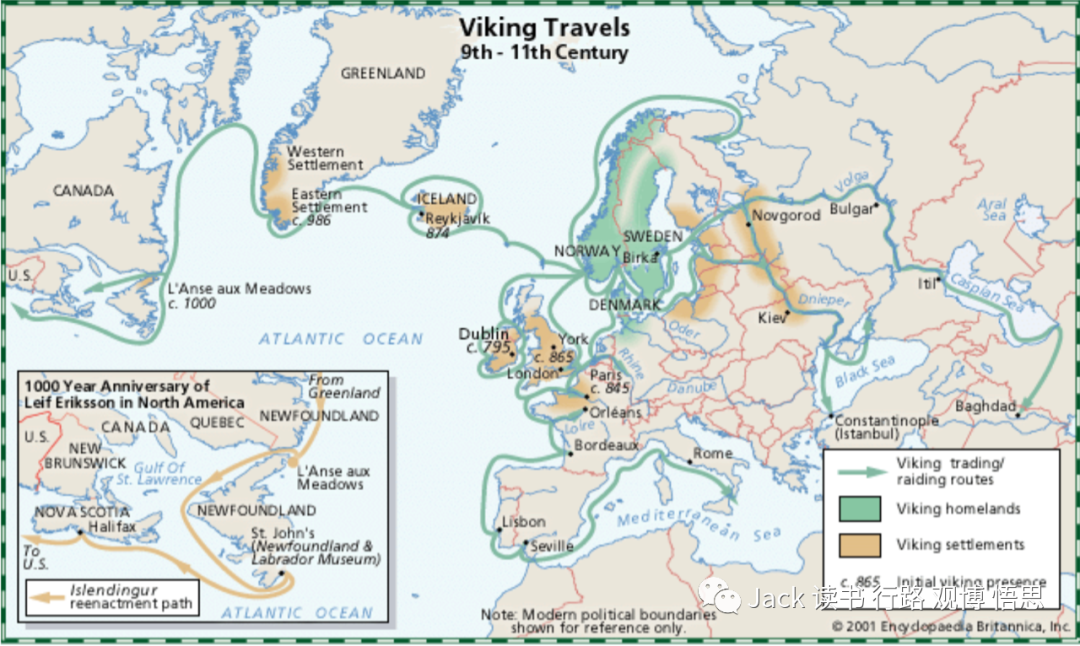
In economics and global trade, the Vikings heralded the first signs of the rise of mercantilism and international economic communication. "Mercantilism" can be roughly defined as the "belief in the benefits of profitable trading." The Vikings were indeed a group that championed mercantilism. When Vikings built any settlement, they ensured that it was situated at the dead center of international trade routes. For example, Hedeby was one of the most prospering Viking settlements. It was located at a point where the North-South trade routes from the Scandinavian peninsula to mainland Europe and the East-West trade routes from the English islands to Eastern Europe passed through. Some of the other ports, including Ribe, Birka, were founded on similar considerations for trade. When Vikings conquered any city, one of their primary focuses would be to turn it into a thriving trading center. Take the instance of Dublin. When Dublin was finally pummeled by Olaf the White and Ivar the Boneless, the Vikings quickly connected it to the critical trading hotspots in England, Norway, and Frankish kingdoms. When the English city of York fell to the Vikings in the year 866, they moved the city's position so that it was near the major river systems. As a result of this decision, York became a major exporter of food and metalware and "was at the western end of the great northern trade arc." These two cities were only a tiny part of the immense trading web that spread from Baghdad in the East and to Greenland and Iceland in the West. The Vikings were undoubtedly the greatest international traders during the Middle Ages.

Viking ship-making was a crucial technological improvement that made such a vast trading network possible. One of the most vital inventions regarding this industry was the keel. The keel stabilized the ship effectively and provided the base for installing a colossal mast and sail, increasing propulsion. A Viking cargo ship with a keel and a large sail, full of goods, could easily cover 4000 miles (~6400 kilometers), allowing for more frequent international transportation. Another imperative innovation for international sea trading was the "Styra bord," or "steering board." The "Styra bord" was usually placed on the right-hand side of the ship, and it lowered the difficulty of effectively controlling the vessel. The presence of the board means that the Viking cargo ships could navigate easier in rough seas and sail with a quicker velocity. With these advanced ship technologies and a mindset determined to trade, the Vikings pushed globalization to a higher and more complex level.
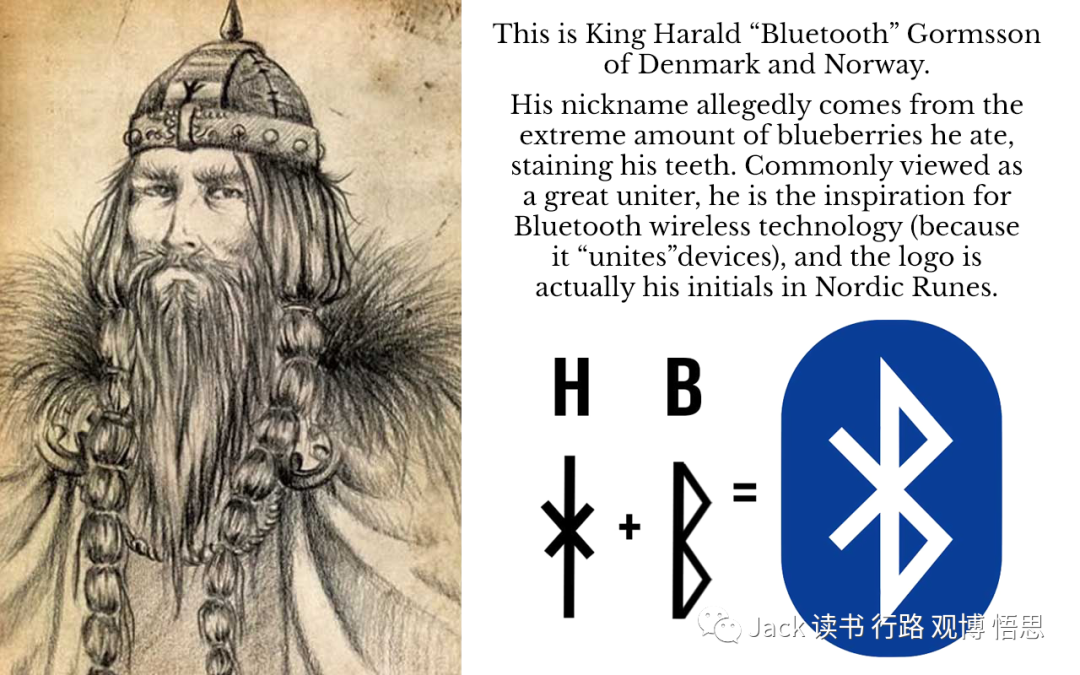
Finally, during and after their conquests, the Vikings and the locals experienced cultural merging on a very impactful scale. Cultural merging means an exchange of ideologies and cultural norms for both sides. For instance, for the Vikings, as they advanced into Europe, Christianity became increasingly powerful and influential on their culture. Some Vikings even abandoned their old Norse religion and converted to Christianity. One such case occurred with the Viking leader Guthrum himself when he and some of his most distinguished warriors were baptized by the English king Alfred in 878 after both sides showed a strong desire to ensure peace as England was battered by fighting between the two sides. Another later case occurred when the Iceland Viking republic converted to Christianity after ecological shifts forced them to change their living status and join Europe. Finally, the medieval Denmark king Harald "Bluetooth" (Look at the illustration above the paragraph to learn a fun fact about Harald "Bluetooth") himself made the Danes Christian, displaying the most systematic cultural influence from the mainland European powers after the Vikings made contact with them. The Vikings also injected new elements into the European culture upon interaction with them. Countless English words people use today are actually derived from the Norse language that the Vikings spoke. We can even say that the Vikings introduced the first concepts of "fairness" and "individual rights." For example, they were the first to bring a novel form of trial by jury into England, and they were one of the first to experiment with direct democracy, giving people voting rights. In traditional Viking culture, women also shared a significantly more equal status than their mainland European neighbors. These ideas would impact and shape the Western world of culture and ideology we know now.
Although their conquests were barbaric and macabre, the Vikings, from an objective point of view, contributed positively and significantly to the unification of European powers, the political changes of European sovereignties, the development of mercantilism and global trade networks, and to the greater cultural merging or interaction. To quote the words of one author, "the destruction they brought was ultimately creative." They constituted a legendary Viking Age with their axes and longships that lasted for about 400 years. In these 400 years of blood and massacre, the seeds for modern civilization were sown through conquest and trade and began to blossom as the Middle Ages gradually faded away. The Vikings had a mortal fate in the end. But perhaps their legacies were really what mattered. Their legacies far outshined their age, taking root deep in the history of the Western hemisphere at large, and have continued to shape the world today.
WORKS CITED
Brownworth, Lars. The Sea Wolves: A History of the Vikings. United Kingdom, Crux
Publishing, 2014.
PICTURES CITED
https://kids.britannica.com/students/assembly/view/143363
https://www.science.smith.edu/climatelit/establishment-of-viking-settlements/
https://www.pinterest.com/pin/571886852665207184/
https://www.abc.net.au/radio/programs/nightlife/twih-lindesfarne-raids/11192374

(林迪斯法恩岛的大屠杀)
公元793年,英格兰东海岸林迪斯法恩岛的陷落标志着一个新的传奇和最终充满着影响力的时代的开始--维京时代。我们大多数人认为维京人是野蛮人,"从龙船上跃起,斧头举起,渴望着血腥"。维京人确实给欧洲和其他周边地区带来了空前的毁灭。他们用猛烈的打击瓦解了查理曼大帝看似无所不能的旧神圣罗马帝国;他们以无数种可怕嗜血的方式征服了英格兰的一个又一个王国;他们在10世纪大举入侵欧洲大陆,留下了欧洲历史上迄今为止从未见过的血迹。毫无疑问,维京人的血腥与暴力带来了灾难,但从另外一个角度看历史,所有的破坏都对文明的曙光极为不利吗?我认为不是。事实上,我认为维京人对欧洲多个国家的统一做出了积极的贡献,给欧洲的政治制度带来了深刻的变革,导致了重商主义或全球贸易前景的诞生,并通过他们血腥的征服创造了文化的融合。这些贡献并没有随着维京时代而最终消逝。相反,维京人大部分的努力与贡献成为我们今天看到的欧洲和整个西方世界的基石。
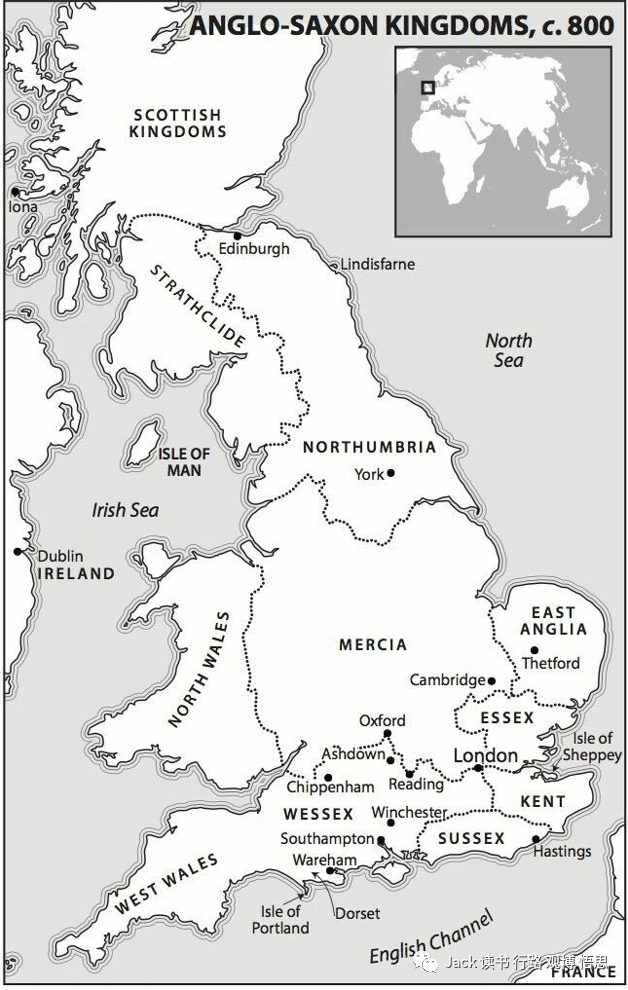
(公元800年左右英国时局图)
伴随着毁灭,维京人为英格兰、苏格兰和其他主要欧洲国家的统一奠定了基础。为了更好地理解这一过程,我们以英格兰为例。在维京时代之前,英格兰在政治上是分裂的,组织松散的。当时有七个王国。四个主要王国是梅西亚(Mercia)、诺森比亚(Northumbria)、东安格利亚(East Anglia)和威塞克斯(Wessex)(见地图)。三个小王国是位于英吉利海峡沿岸的苏塞克斯(Sussex),位于现代伦敦的埃塞克斯(Essex),以及位于坎特伯雷的肯特(Kent)。这七个王国并没有形成统一的力量,甚至彼此之间还经常发生战争。然而,在九世纪,主要由传奇人物 "无骨者 "伊瓦尔领导的维京人部队开始大规模地锁定英格兰。伊瓦尔在865-866年间开始为大举进攻筹集物资。战争准备就绪后,他就发动了入侵。善战的维京部队轻而易举地摧毁了一个又一个主要王国,从诺森比亚到梅西亚,然后是东安格利亚。威塞克斯是唯一一个在维京人的打击下勉强存活下来的王国,因为它的国王阿尔弗雷德向维京人求和,最终与维京人领袖古特鲁姆和平谈判成功。英格兰遭到了史无前例的破坏,但这种破坏也为统一铺平了一条更顺畅的道路。阿尔弗雷德国王是唯一的英国本土系国王,因为其他国王都被消灭了。这一事实成为在威塞克斯王冠下建立一个统一的英国国家的最坚实基础。另外,通过加强他的王国来抵御维京人,阿尔弗雷德还恢复了识字率,促进了经济,并强化了重要的政治或经济中心,从而满足了统一的前提条件。从英格兰的例子中,我们可以看到维京人是如何以其破坏性的力量推动欧洲国家的合并和联合的。

(查理曼大帝的旧神圣罗马帝国)
更令人惊奇的是,维京人给老一代古典时期的欧洲政治体系带来了深刻的变革。今天,我们常常把维京人视为野蛮人,认为他们不可能设计出现代的、正常运作的政府系统。但事实上,通过他们的探索和征服,维京人以两种方式带来了改革:一是展示旧制度的无能和低效;二则是直接将新制度带到他们所到之处。在九世纪,查理曼大帝统治的看似强大的旧神圣罗马帝国逐渐瓦解,因为它最终未能承受住维京人的打击。帝国本身的组织存在根本性的缺陷,比如它过度依赖一个强大的领导者来维持各部分的运转(查理曼大帝的继任者“虔诚的”路易并不是一个强大而意志力坚定的国王,帝国在他的统治时期逐渐瓦解)。随着帝国在维京人的攻击下崩溃,新的更小、更有政治效率的国家从灰烬中崛起。在这些国家中,有四个国家将成为中世纪最伟大的欧洲强国:法国、英国、新神圣罗马帝国和西西里王国。如果没有维京人,旧的制度不会如此迅速和彻底地被取代,政治改革与发展也必定很困难。维京人还进行了创新和调整,他们所到之处都引入了新的政治结构。在冰岛,维京人建立了一个基于个人权利的共和国。这种相对直接的民主在那个时期之前是很少见的。实际上,当冰岛的生态条件发生变化时,不再适宜长久居住,居民们参加了一次民主公投,结果决定将他们的共和国置于挪威的统治之下。维京人在其他地方也通过加入新鲜元素来改革政府,例如在法国或俄罗斯。他们的行动和实验可以使他们成为那个时代最重要的政治实验者和政府创造者。

(绿色箭头为维京人贸易路线)
在经济和全球贸易领域,维京人的到来预示着重商主义和国际经济交流崛起的最初迹象。"重商主义 "可以被粗略地定义为 "相信有利可图的贸易有诸多好处"的信仰。维京人无疑是一个拥护重商主义的群体。当维京人建造任何定居点时,他们都确保它位于国际贸易路线的绝对中心。例如,赫德比是最繁荣的维京人定居点之一。从斯堪的纳维亚半岛到欧洲大陆的南北贸易路线和从英国岛屿到东欧的东西贸易路线必经过它的位置。其他一些港口,包括里贝、比尔卡,都是基于类似的贸易考虑而建立的。当维京人征服任何城市时,他们的主要重点之一是将其变成一个有利可图的贸易中心。以都柏林为例,当都柏林最终被“白人”奥拉夫和“无骨者”伊瓦尔攻陷时,维京人迅速将其与英格兰、挪威和法兰克王国的重要贸易热点联系起来。当英格兰的约克城在866年落入维京人之手时,他们占领后移动了城市的位置,使其靠近主要河流系统。由于这一决定,约克成为食品和金属器皿的主要出口地,并且 "处于北方大贸易弧的西端"。这两个城市只是东起巴格达、西至格陵兰和冰岛的巨大贸易网中的一小部分。维京人无疑是中世纪最伟大的国际贸易者。

(维京船龙骨与底部建造示意图)
使得建立如此巨大的贸易网络成为可能的一项关键技术改进是在维京人的船舶制造方面。关于这个行业最不可缺的发明之一是船的龙骨。龙骨有效地稳定了船舶,并为安装巨大的桅杆和风帆提供了基础,增加了推进力。一艘有龙骨和大帆的维京人货船,装满了货物,可以轻松跨越4000英里(约6400公里)的距离,使国际运输日益繁荣。国际海上贸易的另一个必要的创新是 "Styra bord",即 "转向板"。“Styra bord "通常放置在船的右侧,它降低了有效控制船只的难度。这意味着维京人的货船可以在波涛汹涌的海面上更容易航行,并以更快的速度航行。凭借这些先进的船舶技术和进行贸易的决心,维京人将全球化推向了更高更复杂的水平。

(关于“蓝牙”维京国王的有趣事实:蓝牙的logo来源于他维京符文名字首字母的结合体。“蓝牙”国王有效地团结了维京人,同时蓝牙有效地“团结”连接了电子设备,两者间有直接联系)
最后,在征服期间和之后,维京人和当地欧洲人经历了非常有影响力的文化融合。文化融合意味着双方存在着意识形态和文化习俗的交流。例如,对于维京人来说,随着他们向欧洲的推进,基督教对维京人的影响力变得越来越强大。一些维京人甚至放弃了他们古老的北欧宗教,而皈依了基督教。其中一个案例发生在维京人领袖古特鲁姆本人身上,当时他和他的一些最杰出的战士在878年接受了英国国王阿尔弗雷德的洗礼,当时双方都表现出强烈的愿望,希望确保与英格兰实现持久和平。另一个案例发生在冰岛维京共和国。共和国决定皈依基督教,因为生态环境的转变迫使那里的居民改变生活状态,加入欧洲。最后,中世纪的丹麦国王哈拉尔德-“蓝牙”亲自让丹麦人信奉基督教,成为了维京人与欧洲大陆接触后最系统的文化影响案例。对欧洲人来说,与维京人的交往也为他们的文化注入了新的元素。今天人们使用的无数英语单词实际上都来自维京人所说的北欧语言。我们甚至可以说,维京人最早引入了 "公平 "和 "个人权利 "的概念。举例来说,他们是第一个将新颖的陪审团审判形式带入英国的人,而且他们是最早尝试直接民主的人之一,给予人们投票权。在传统的维京文化中,与他们的欧洲邻居相比,妇女的地位也明显更为平等。这些思想影响和塑造了我们现在所熟知的西方文化和意识形态世界。
总的来说,维京人的征服野蛮、残暴,但客观上,他们对欧洲大国的统一、欧洲主权国家的政治变革、重商主义与全球贸易网络的发展以及更深入的文化融合或互动做出了积极而重要的贡献。引用一位作者的话说,"他们带来的破坏最终是具有创造性的"。凭借他们的斧头和长船,他们构成了一个传奇的维京时代,持续了大约400年。在这400年的血腥和屠杀中,维京人通过征服和贸易播下了现代文明的种子,并随着中世纪的逐渐消逝而开始开花结果。维京人最后的命运不是永恒的,但也许,他们给世界与历史带来的遗产才是真正重要的。他们的遗产远远超过了他们的时代的年龄,在整个西方的历史中深深扎根,并继续塑造着我们今天的世界。
- 本文标签: 原创
- 本文链接: http://www.jack-utopia.cn//article/421
- 版权声明: 本文由Jack原创发布,转载请遵循《署名-非商业性使用-相同方式共享 4.0 国际 (CC BY-NC-SA 4.0)》许可协议授权
